MEETING BUMP UP!
Design research, Design management, Strategy
2015, SCAD Final Project
Abstract
In the effort to participate in the school’s governance, university students lead a lot of self-guided meetings that are not conducted efficiently, do not yield the desired outcomes, and do not lead to a positive experience of the participants. This research project has been undertaken to offer a model and methods for successful collaborative student-led meetings.
Based on the research findings the Meeting Bump Up! (MBU!) Suite has been developed, tested, and validated. The suite includes the four-phased MBU! Model & Process, the MBU! Toolkit, the MBU! Workshop, and the MBU! Virtual Collaboration Space. The strategic Meeting Bump Up! (MBU!) Toolkit includes creative engagement processes for each particular phase.
While the MBU! Suite was designed for student leaders, it can also be successfully applied to all kinds of meetings where collaboration and shared leadership are desired.
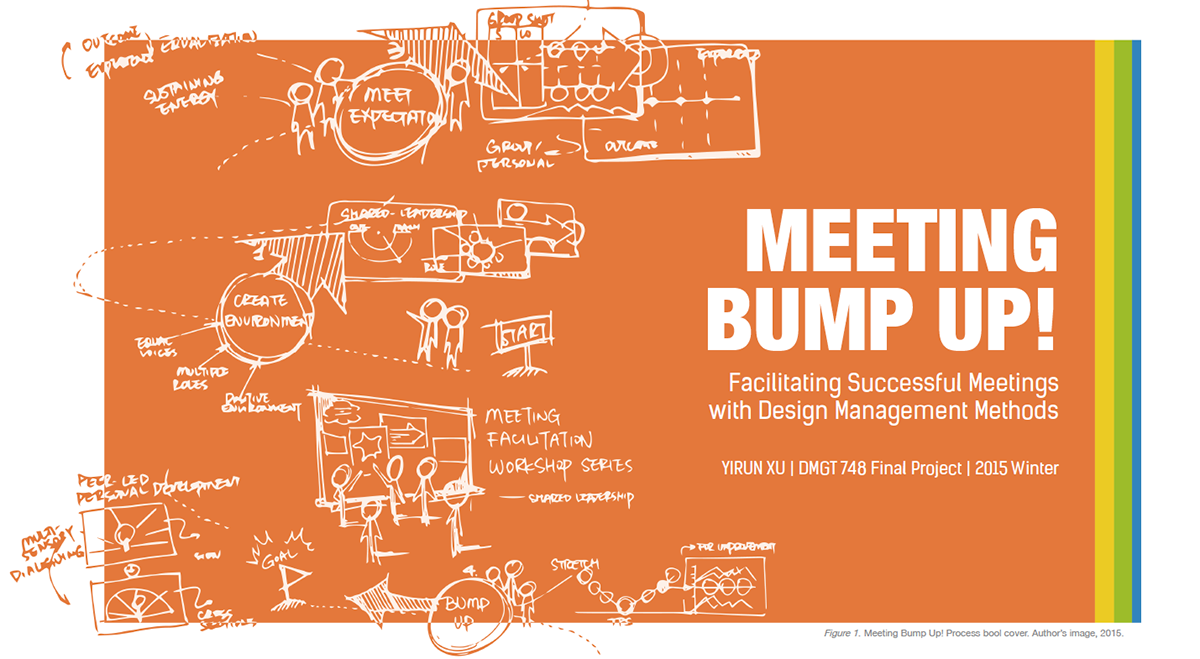
——————————————————————————————————————————————————
The subject of this study is to apply Design Management methods in student-led meetings in order to increase meeting participation and achieve desired meeting outcomes.
——————————————————————————————————————————————————
The subject of this study is to apply Design Management methods in student-led meetings in order to increase meeting participation and achieve desired meeting outcomes.
——————————————————————————————————————————————————
Primary Research & Analysis
2X2 AXIS CHART | Competitor and Collaborator Analysis
Facilitation Guidance vs. Facilitation Purpose

2X2 AXIS CHART | Competitor and Collaborator Analysis
Meeting Expectations vs. Facilitation Methods
Meeting Expectations vs. Facilitation Methods
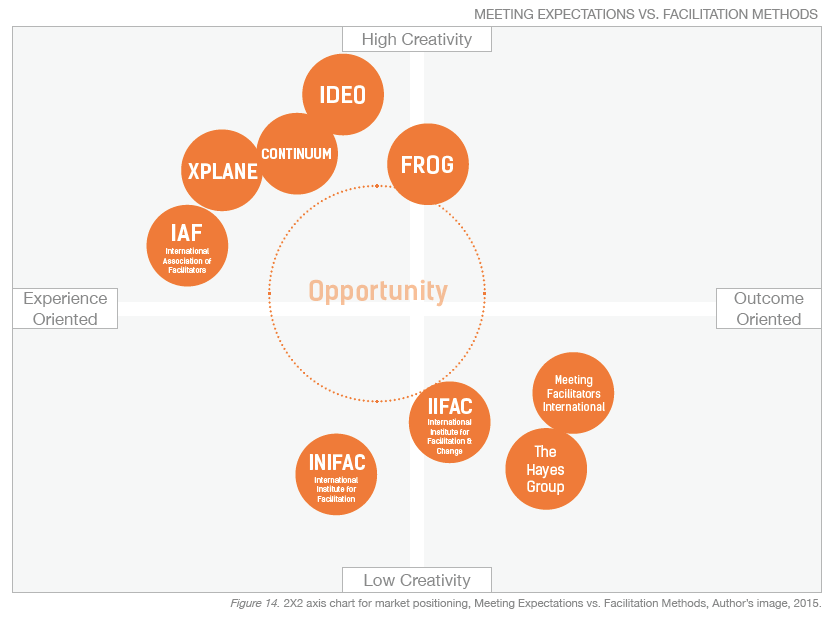
INTERVIEW | Student-led Meetings Interview
Students’ moods were always influenced by how other participants treated the meeting.
(They wanted a positive environment, but negative members always infused their moods.)
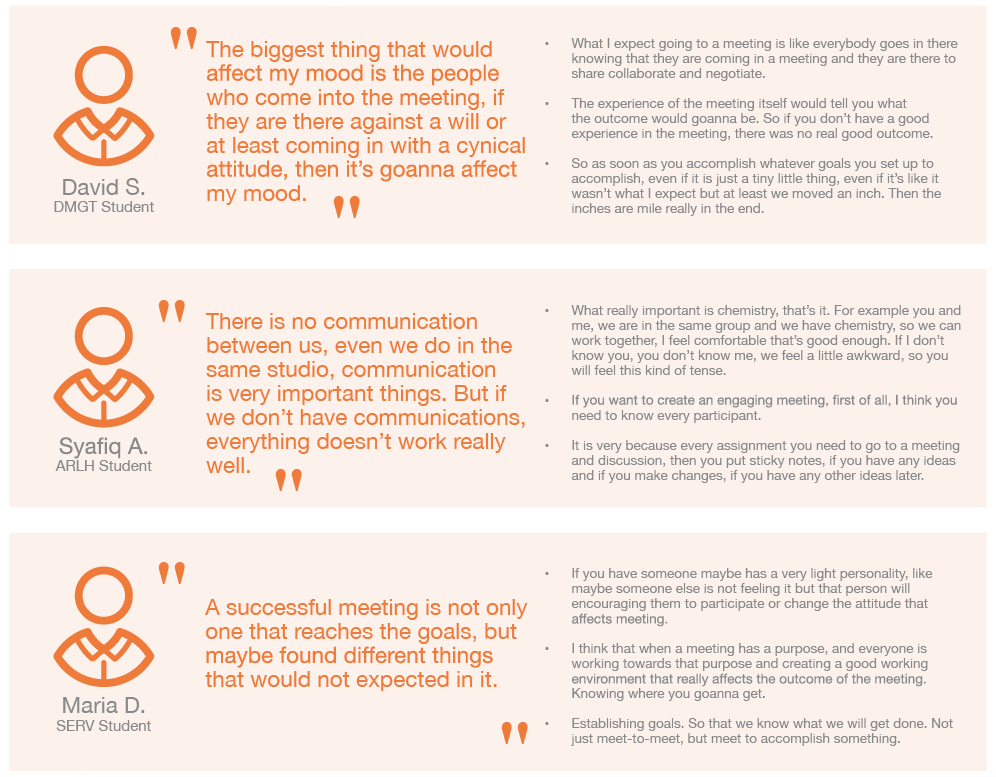
OBSERVATION | Student-led Meetings Observation
In the situation of student meetings, the role of leader was not clear.
The group meetings were conducted in equal environment. The so-called leader was always the person knew more about the topic, and talked more in discussion.

JOURNEY MAP | Students’ Actions in Meetings
In the situation of student meetings, the role of leader was not clear. The group meetings were conducted in equal environment. The so-called leader was always the person knew more about the topic, and talked more in discussion.
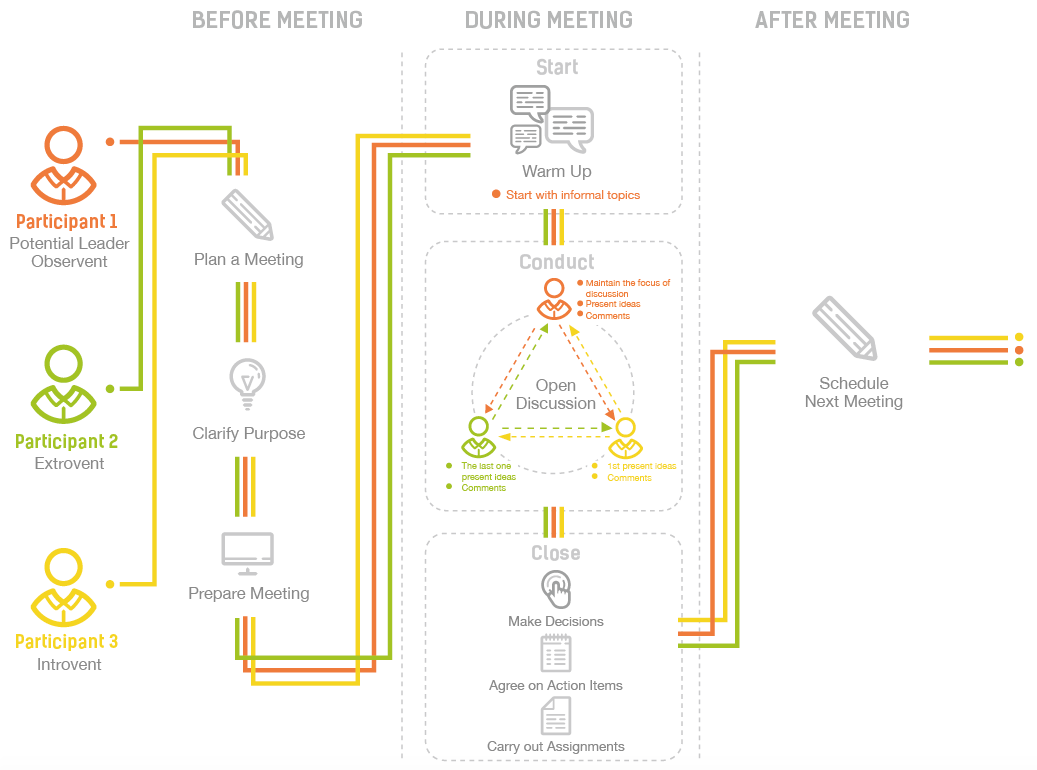
SWOT ANALYSIS | Current Situation in Student Meetings
Phenomena in the current situation (like no specific leadership role existed in meeting) brought both positive and negative influence to the development of meeting facilitation. There is need to find appropriate methods to shift the negative to the positive side.
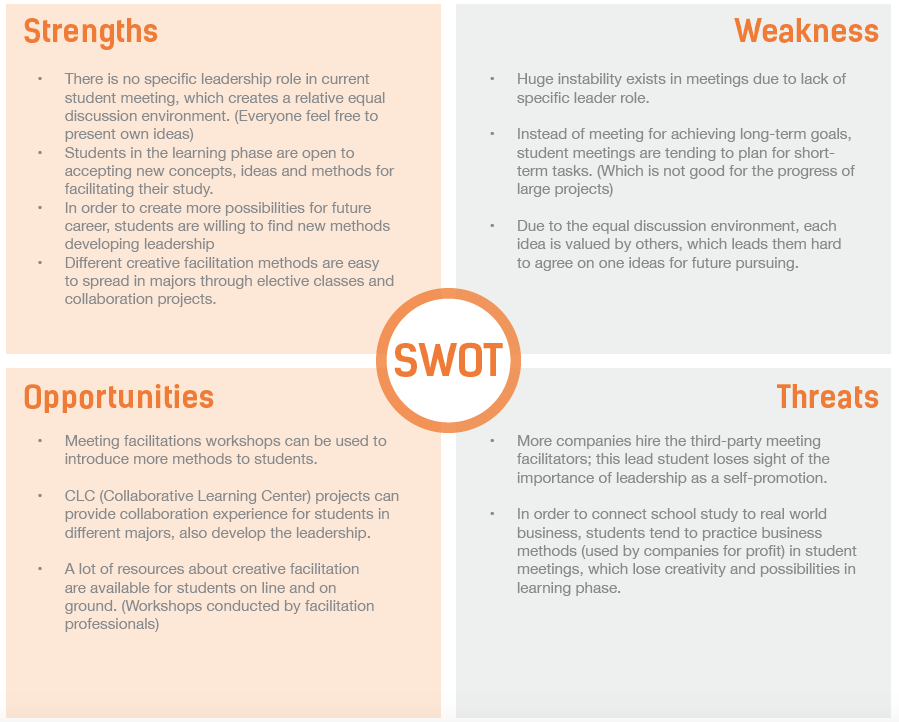
AFFINITY MAP | Students’ Perception of Meeting
Students’ expectation on leadership was basically about connecting the one who might
not connected on their own.
The precondition of a good collaboration was to know each other.
Design Management Methods were thought to provide a comprehensive way to think problems and giving people different aspects to look at it.
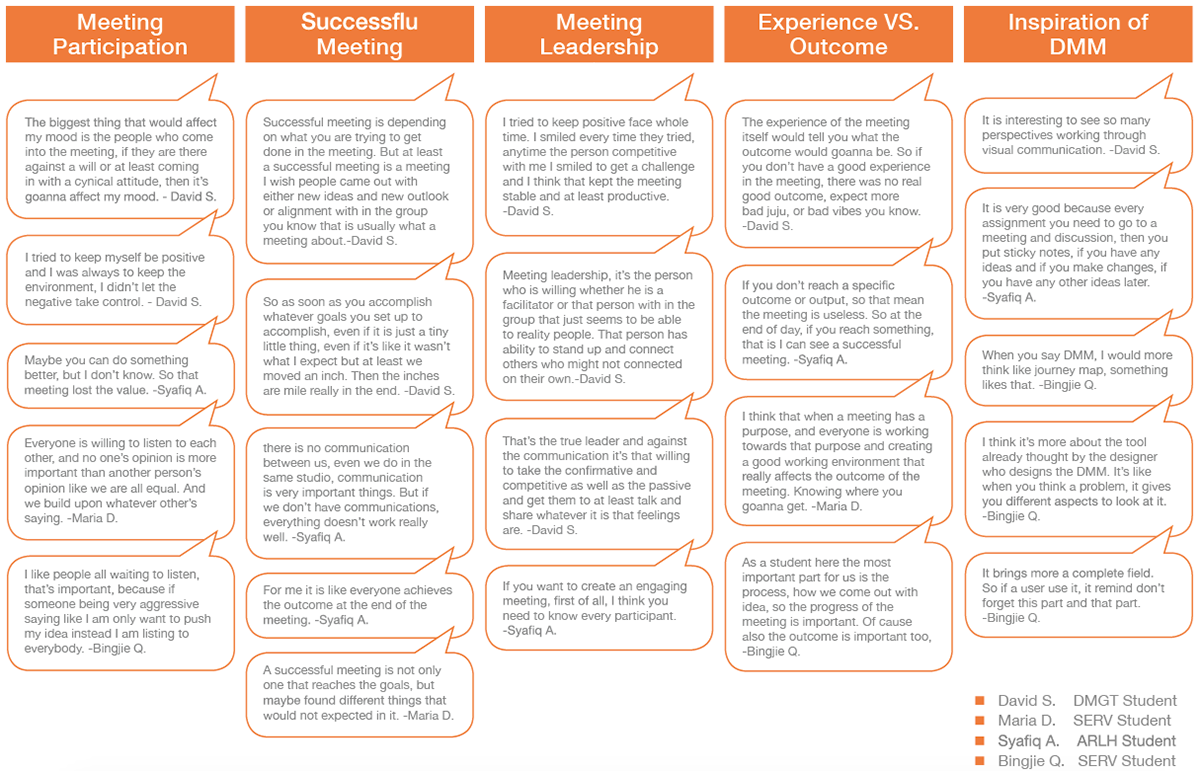
RESEARCH INSIGHTS | Research Findings at a Glance
Create Environment
Positive Environment: Participants’ (positive and negative) attitudes influence the co-creation of the meeting environment. A positive atmosphere is inspiring, and once the atmosphere in the room becomes negative, the entire meeting turns quickly into a struggle for all participants.
Multiple Roles: Every meeting participant should be able and be willing to play both roles, that of the facilitator and of an active participant. The expectation of multiple roles serves as a reminder to do both, contribute and co-lead.
Equal Voices: In meeting compositions there are extroverts and introverts, each of whom may take up an unbalanced amount of time, energy, or air. If the group does not find a way to balance this inequality and
make sure every voice is heard equally, they may lose the opportunity to arrive at most creative and feasible outcomes.
Build Relationship
Safe Space: Both, facilitators and participants, are responsible for creating a safe environment where everyone feels invited, appreciated, connected, and therefore able to speak their minds freely.
Interaction: In order to build relationship, participants need interactions that bring them closer together and allow them to get to know each other. The process of building relationship equals the playing field and builds “good chemistry.”
Meet Expectation
Equalization: Balance the focus on creating a positive experience for participants with the focus on achieving the desired outcomes. Both goals are equally important and go hand in hand.
Sustaining Energy: Participants face various issues in different collaboration phases, such as, for instance, fun
experience during brainstorming and mundane budgeting tasks. The individual level of contribution may vary during different phases, but the group, as a whole must sustain a certain level of engagement in each of the phases.
Bump Up
Stretch: Meetings are highly successful when participants grow beyond their own expectations of themselves and/or the group and discover totally new possibilities or reach goals that stretch them beyond their own envelope.

Value Proposition
For participants in student-lead meetings,
Who are seeking to improve their group and meeting facilitation skills
Our toolkit provides a strategic approach for applying innovative creative engagement methods for leading successful meetings across various disciplines.
We do this by offering a set of easy steps to open meetings, to create and decide upon an appropriate meeting agenda, to collaboratively define a desired meeting outcome, and to choose processes for achieving the defined outcome, so that participants are fully engaged throughout and leave the meeting with a positive experience, clarity, and next steps for potential action.
Unlike other existing meeting facilitation methods that require the guidance of strong leadership our toolkit guides facilitators-intraining, step-by-step, in designing and facilitating collaborative processes toward successful meeting outcomes based upon equality of participants.
Prototype Development and Testing
Concept 1: Visual Map Sequence
Concept 1 is a collection of visual maps for increasing productivity in meeting facilitation. The maps guide the facilitator and participants through a series of sequential steps.
Concept 2: Meeting Facilitation Learning Workshop
Concept 2 is a series of five meeting facilitation workshops for people seeking to improve their meeting facilitation skills in order to increase the quality of the collaborative meetings they either lead and/or in which they participate.
Concept 3: Consideration of Facilitation Toolkit
Concept 3 is the creation of a facilitation toolkit that is offered during the facilitation learning workshops. It will contain the maps to be used for each phase and instructions how to use them.
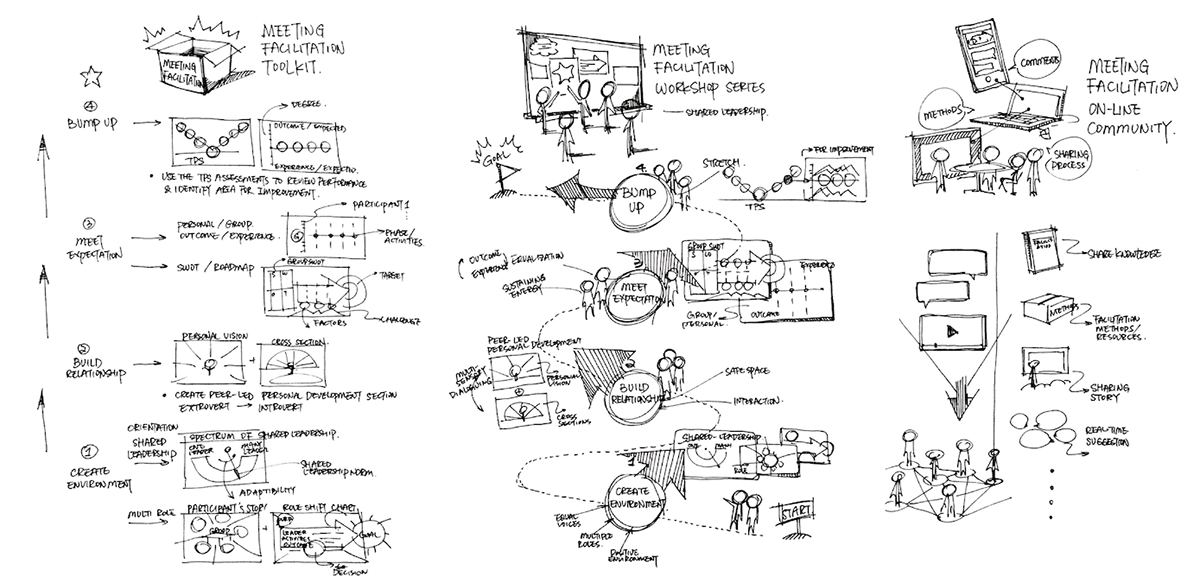
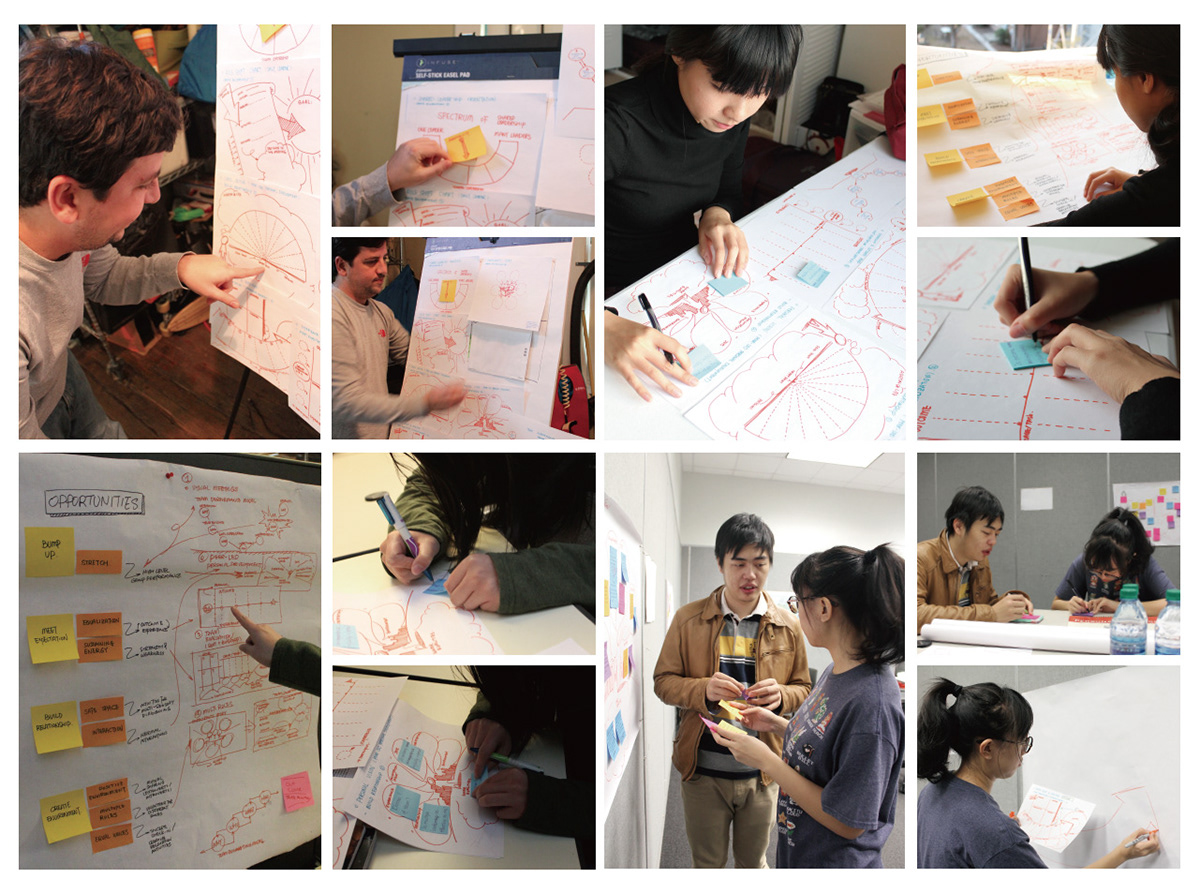
Final Design to Market
MBU! Toolkit
MBU! Processes have been designed to offer creative, visual and fun group processes that both experienced and inexperienced meeting facilitators can easily apply to any kind of meetings.

MBU! Learning Workshop
MBU! Learning Workshops are the section provided for meeting participants to know and understanding the MBU! Process better in firsthand experience.
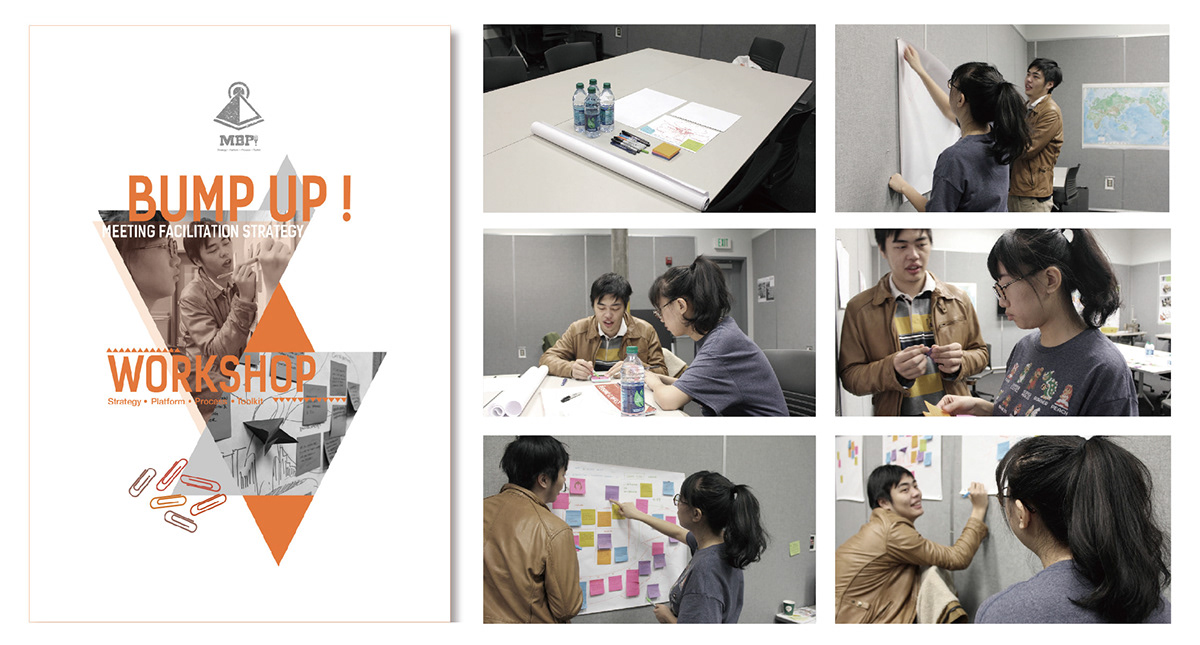
MBU! Virtual Collaboration Space
Through MBU! Virtual Collaboration Space MBU Practitioners can learn together, share ideas and experiences, co-develop new tools and processes, and collaborate on projects.
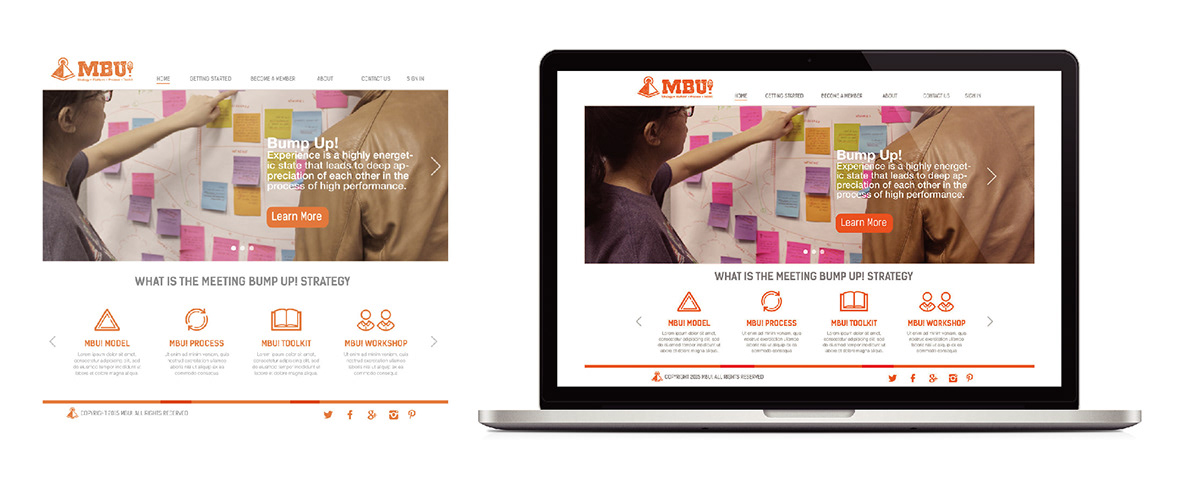
Recommendations
The MBU! Suite represents a strategic approach for designing and facilitating successful meetings. Additionally, MBU! Practitioners continuously hone their shared leadership skills, meeting design skills, and facilitation skills, and they have the opportunity to co-develop the suite further through the MBU! Virtual Collaboration Space .
The larger MBU! Community is encouraged to continue developing and testing new MBU! Processes and Tools to evolve the work further.

